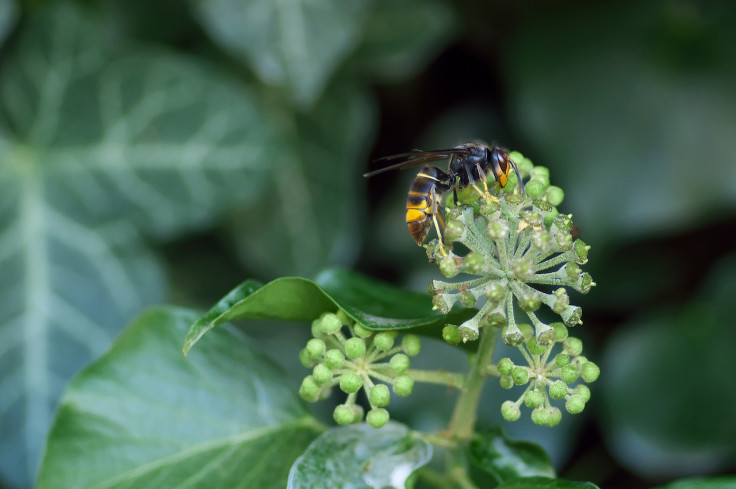1 Queen To Rule Them All? European Hornet Invasion May Have Come From Single Queen
KEY POINTS
- Researchers conducted genetic analysis on the Irish V. velutina specimen
- They found that it's of the same lineage as the specimens from Europe
- The "entire" European V. velutina population may have "descended from a single mated queen"
Just how much damage can one insect do? A single mated queen may have sparked the ongoing Asian hornet invasion in Europe.
For their study, published in the Journal of Hymenoptera Research, a team of researchers conducted a genetic analysis on an Asian/yellow-legged hornet (Vespa velutina) specimen that was found in Ireland in 2021. This was the first record of the species in the country, the researchers noted, adding that it has prompted concerns among beekeepers and biologists as the species poses "enormous" threats to pollinators, including the European honey bees.
This, however, was not the first time V. velutina was spotted in Europe. Native to Southeast Asia, the species was first spotted in Europe in France in 2004. Since then, it has successfully spread across continental Europe and Jersey Island and has also had 21 confirmed sightings in England since 2016.
For their work, the researchers took a further step in their genetic analysis of the Irish specimen.
"Earlier work had demonstrated that Asian hornets in Europe apparently shared the same genetic lineage, based on studies of a single gene," one of the study authors, Eileen Dillane of the University College Cork, said in the news release from Pensoft Publishers. "We took this a step further and looked at two additional genes which would be more sensitive in detecting variation within the invasive population."
The idea was to see whether it was related to the European population or if it came from a "new point of entry." They compared the Irish specimen to the ones from Portugal, Spain, Germany, France and the Channel islands, which were also sequenced at those specific genes.
The researchers found that the Ireland specimen is, indeed, of the same lineage as the ones in Europe. This suggests that the discovery of the species in Ireland "represents a further spread of the ongoing European invasion." It's possible, according to them, that the hornet made its way to Dublin from Europe or Britain.
Interestingly, they also found that all the hornets throughout Europe may have descended from a single queen that was introduced in France in 2004, noted Pensoft.
"(O)ur results, along with those of other groups, suggest that the entire population of V. velutina in Europe, now potentially numbering many millions of individuals, are descended from a single mated queen arriving from China some 15–20 years ago," the researchers wrote.
Tracking an invasion – a single Asian hornet sparked the ongoing spread across Europe @Pensoft #hymenoptera #invasivespecies #biodiversitythreats #animalpollination #bees https://t.co/12Sw9K6uYU
— EurekAlert! (@EurekAlert) December 7, 2022
This shows the potential of such insects' ability to proliferate and become invasive even from just a few individuals, the researchers said. But while the idea that a single queen can cause this kind of invasion sounds like scary news, it may also have revealed a weak spot for biological pest control because of the population's "low genetic diversity."
In the case of Ireland, however, the question of whether V. velutina can establish a population in the country remains uncertain. It's possible, the researcher said, that the climactic conditions in the country may prevent the establishment of the species.
"Nonetheless, climate change is likely to increase the threat of a successful invasion in the future, so vigilance against this species must be maintained," they said, as per Pensoft.
In France, for instance, V. velutina usually disappears by the end of September because of the colder temperatures. But this year's milder autumn has reportedly given them a chance to remain active and continue to spread later in the year.

© Copyright IBTimes 2024. All rights reserved.






















